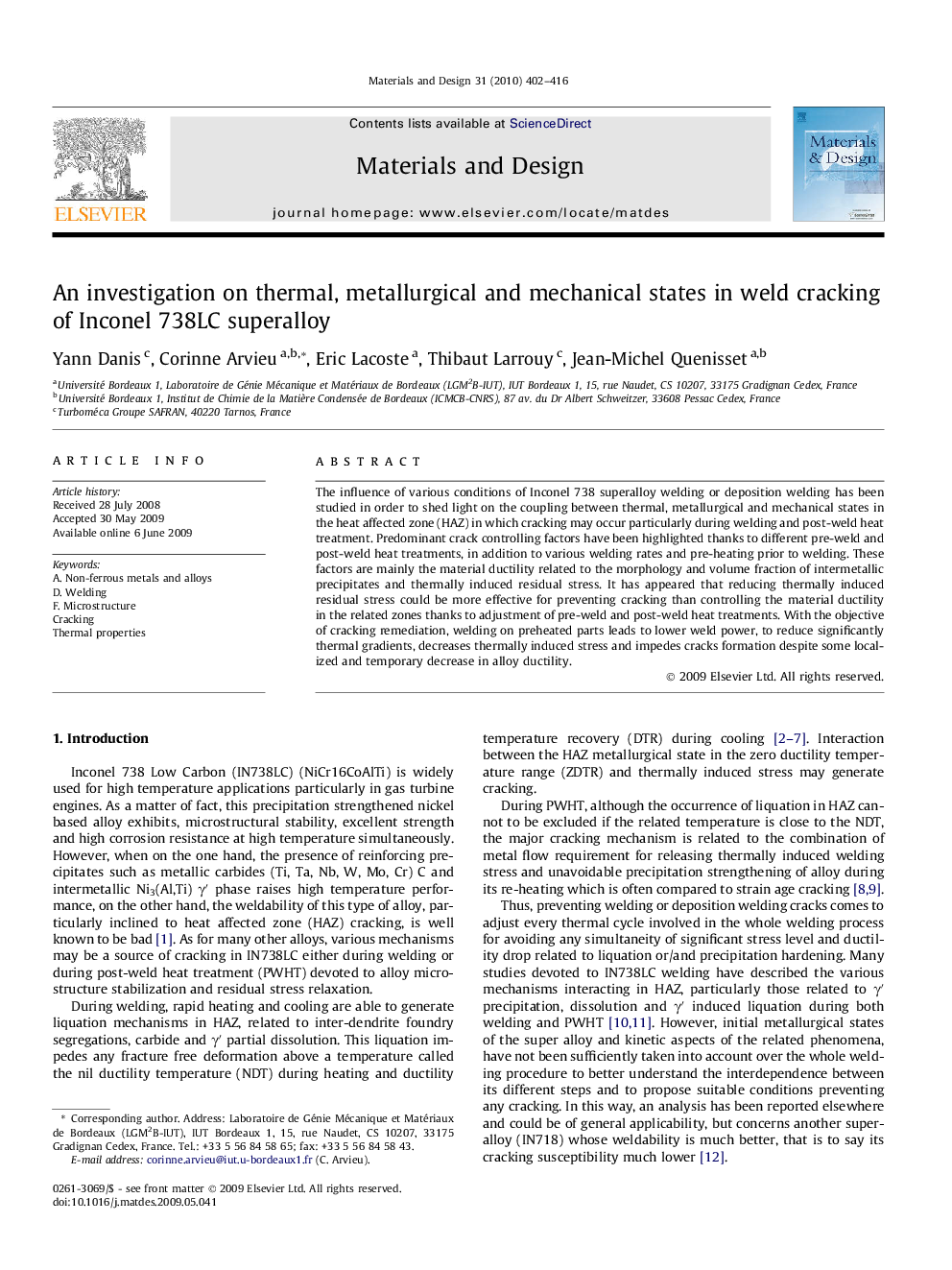| Article ID | Journal | Published Year | Pages | File Type |
|---|---|---|---|---|
| 832311 | Materials & Design (1980-2015) | 2010 | 15 Pages |
The influence of various conditions of Inconel 738 superalloy welding or deposition welding has been studied in order to shed light on the coupling between thermal, metallurgical and mechanical states in the heat affected zone (HAZ) in which cracking may occur particularly during welding and post-weld heat treatment. Predominant crack controlling factors have been highlighted thanks to different pre-weld and post-weld heat treatments, in addition to various welding rates and pre-heating prior to welding. These factors are mainly the material ductility related to the morphology and volume fraction of intermetallic precipitates and thermally induced residual stress. It has appeared that reducing thermally induced residual stress could be more effective for preventing cracking than controlling the material ductility in the related zones thanks to adjustment of pre-weld and post-weld heat treatments. With the objective of cracking remediation, welding on preheated parts leads to lower weld power, to reduce significantly thermal gradients, decreases thermally induced stress and impedes cracks formation despite some localized and temporary decrease in alloy ductility.
